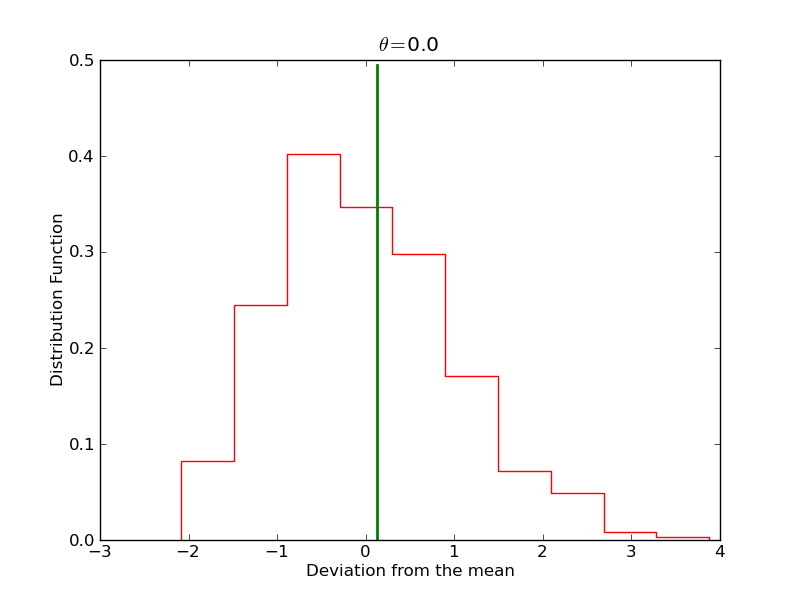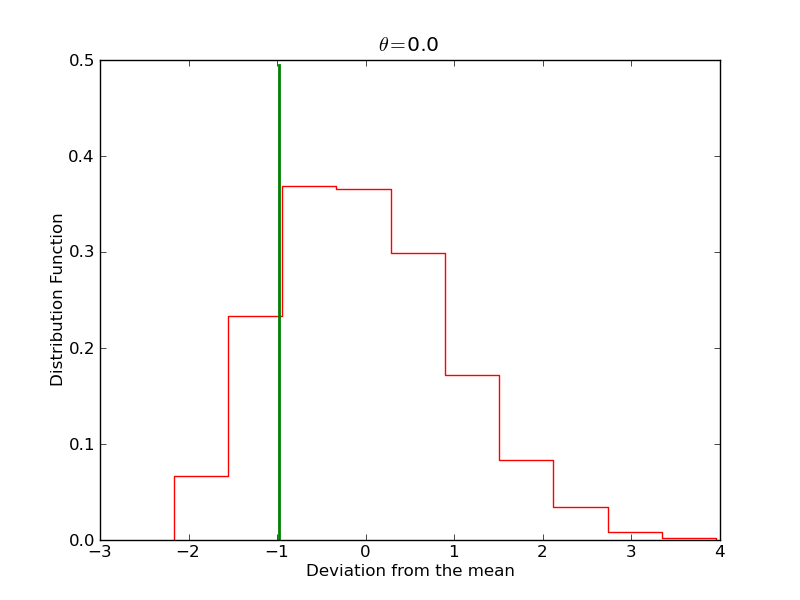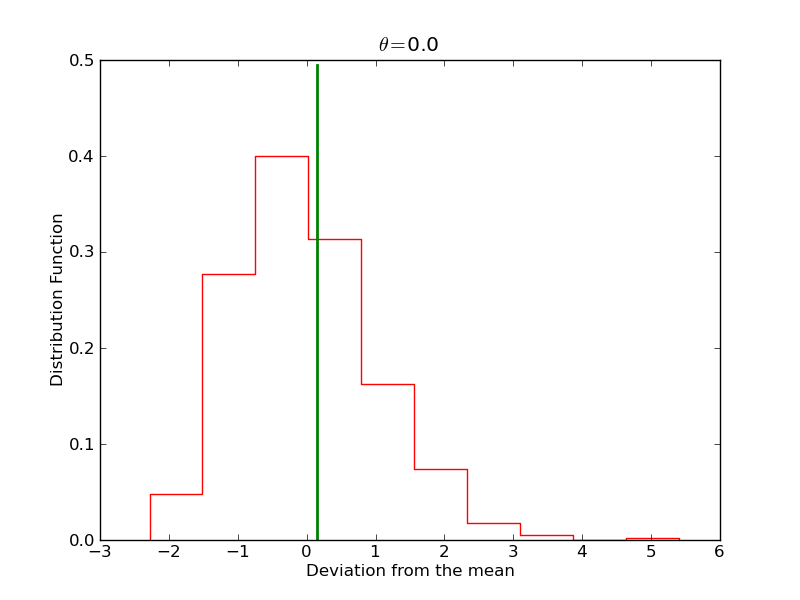
Are there echoes from the pre-Big Bang Universe? A search for Low Variance Circles in the CMB Sky
Amir Hajian
The short answer is, no!
In a recent paper Gurzadyan & Penrose (GP) reported a high significance detection of concentric circles in the Cosmic Microwave Background (CMB)
maps with anomalously low variance. The existence of concentric low variance circles in CMB sky, generated by black-hole encounters in an aeon preceding our big bang, is a prediction of the Conformal Cyclic Cosmology.
The detection of these circles, if true, poses a serious challenge to our understanding of the CMB as
being a Gaussian random field within the framework of inflationary cosmology. The above authors used data from
the Wilkinson Microwave Anisotropy Probe (WMAP) to look for concentric low variance circles in the CMB sky.
They examined 10885 choices of center in the CMB sky after masking the galactic plane from the maps.
For each choice of center, they computed the variance of the temperature fluctuations in successively larger concentric rings of 0.5 degree,
at increasing radii. They found three groups of rings of low variance at various radii. They claim that the low variance circles they find are
statistically very significant (6 sigma detections).
I repeated what GP had done. And I used Monte Carlo simulations of the CMB sky with WMAP beam and noise to
test the statistical significance of these circles. I did find the same variance patterns at the locations that GP reported.
But a proper comparison between the data and the Monte Carlo simulations, revealed that there is nothing anomalous about the circles of GP.
I made 200 simulations of the CMB sky at two resolutions of the W and V bands of WMAP and added noise simulations to the simulated CMB maps.
These simulations have an average power spectrum that agrees very well with the power spectrum of the WMAP data in V- and W-band.
Then in the simulations I computed the variances of the low variance rings detected by GP and compared the average variance along the rings in simulations
with the variances of the same circles in WMAP data.
Figures below show the results.
|
|
Figure 1. Variances of the low variance circles of GP compared with the average variances of
the same circles in 200 Monte Carlo simulations of the CMB sky with the anisotropic noise of WMAP.
Left/right panels show the results of W/V bands. The dashed blue line is the mean value of the simulations of
a Gaussian CMB sky with WMAP noise. Dark and light blue bands represent 1 and 3$\sigma$ levels computed from the standard
deviation of the simulations. Although we see the same patterns as reported by GP, none of the variances are anomalously low.
These data do not support the existence of pre-big bang circles in the CMB sky.
|
 |
Figure 2.
Comparison of measured values of the low variance circles of Gurzadyan & Penrose with the distribution function
computed from simulations. The three figures from top to bottom correspond to the three groups of circles as in Figure 1.
The red histogram shows the normalized probability distribution function obtained from measuring variances of the GP low-variance circles
in 1000 Monte Carlo simulations of the CMB sky. The green line shows the measured value in WMAP data (W-band). We are
plotting the standardized values on the x-axis. The radii of the rings (in degrees) are printed above each plot.
A significant detection of a low variance ring means the green line should be on the extreme left side of the plot, far from the
histogram. As we see, even the lowest variance circle of GP is not really anomalous
when compared with the random realizations of the CMB sky with realistic WMAP-like anisotropic noise. |
 |
 |
As it is seen in the figure, these curves agree with the GP work in that we do see the same pattern on the variances as GP reported.
But compared to the result of the Monte Carlo simulations of the Gaussian random CMB sky, the peaks and troughs on the above curves
are not anomalous. In order to avoid misinterpretation of the results due to the non-Gaussianity of the distribution function, we directly compare
the data with the full distribution function computed from the simulations.
To do that we make another 1000 simulations and compute the variance of the GP circles for each of them to obtain 1000 measurements of the variances
for every GP circle. We plot the variances of the circles measure from WMAP data (W-band) and compare it with the variances computed at the location of the
same circles in 1000 simulations. The results are given in Figure 2.
As the figure shows, even the lowest variance circle of GP is not really anomalous
when compared with the random realizations of the CMB sky with realistic WMAP-like anisotropic noise.
Therefore we conclude that the low variance circles of Gurzadyan & Penrose are not anomalous.
They can naturally occur in a Gaussian CMB sky consistent with the predictions of the inflationary cosmology.
Read the paper on arXiv:1012.1656
Read the Nature story about this: No evidence of time before Big Bang.
Read the story in Science News:Cosmic reincarnation idea may be dead.
Two similar papers on this topic: arXiv:1012.1268, arXiv:1012.1305
|
|

BBC: Bangs big and small in cosmic origins debate
A radical idea about the origins of the Universe is being debated at unusual speed, in unusually plain view - but should journalists keep out?
More...
National Geographic: Space Circles Are Proof of a Pre-Big Bang Universe?
Recycled-universe theory "works on paper," but details missing, critics say.
More...
ScienceNews: Cosmic reincarnation idea may be dead
A startling claim that the cosmos existed before the Big Bang doesn't appear to be supported by detailed analyses, three independent teams of scientists have concluded.
More...
Nature News: No evidence of time before Big Bang
Latest research deflates the idea that the Universe cycles for eternity. More...
Are there echoes from the pre-Big Bang Universe?
A search for Low Variance Circles in the CMB Sky. More...
Going round in circles
In contradiction to most cosmologists’ opinions, two scientists have found evidence that the universe may have existed for ever. More...
|
|